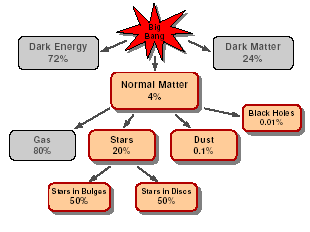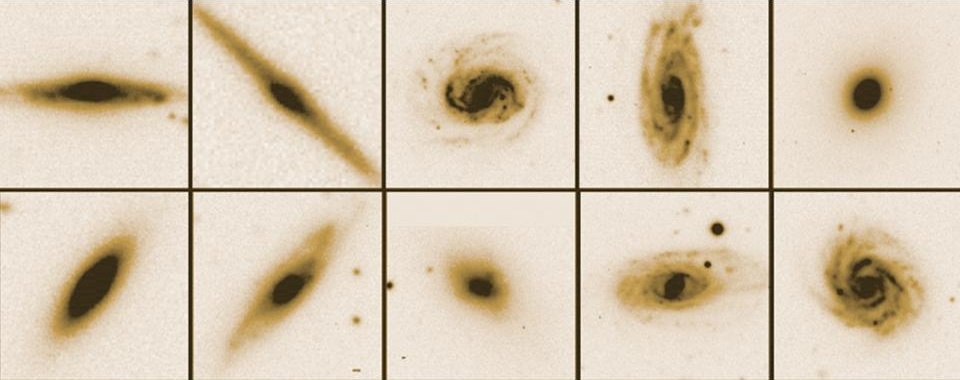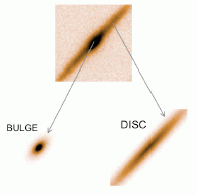Friday, 18 August 2006
Universe 20% of the way through its fuel reserves
PDF version.An international team of astronomers has announced the completion of a large survey of the nearby Universe. Amongst their findings is that 20% of the ordinary matter in the Universe has already been turned into stars.

|
|
The cosmic inventory. High quality version. |
"The remaining 80% are almost completely in gaseous form lying both within and between the galaxies and constitutes the reservoir from which future generations of stars may form," says project leader Dr Simon Driver of the University of St Andrews, Scotland.
The new data were released at the General Assembly of the International Astronomical Union in Prague today. This 21st century survey, aptly named the Millennium Galaxy Catalogue (MGC), was constructed from over 100 nights of telescope time in the Canary Islands, Australia and Chile, and contains over ten thousand giant galaxies, each comprising of 10 million to 10 billion stars.

|
|
A selection of galaxy images from the Millennium Galaxy Catalogue. High quality version. |
The survey is the first to catalogue reliable information on the distances, sizes, colours and shapes of both the bulge and disc components of so many galaxies. "For some time now theorists have predicted that galaxy bulges and discs should form through entirely distinct mechanisms. Our new survey has now provided very convincing evidence to support this picture," says Driver. This conclusion was reached by showing that the colours and shapes of the bulges are entirely distinct to those of the discs. There is no overlap.

|
|
An example of a galaxy image decomposed into its bulge and disc components. High quality version. |
Driver's team found that on average half the stars in the Universe lie in the central bulges of galaxies, while the other half are found in discs surrounding the bulges. "This means that on a cosmic scale both mechanisms for forming stars are roughly equally important," explains Dr Liske.
"By measuring the concentration of stars in each galaxy's bulge, we have also been able to determine the super-massive black hole mass at the heart of each galaxy," reports Dr Alister Graham of the Australian National University. "It was then a simple matter of summing these up to determine how much of the universe's matter is locked away in such monstrous black holes, some of which are one million billion times more massive than the Earth."
By adding up each of these key components they find that the Universe has guzzled its way through about 20% of its original fuel reserves. "I guess the simplest prognosis is that the Universe will be able to form stars for a further 70 billion years or so after which it will start to go dark," states Driver. "However, unlike our stewardship of the Earth the Universe is definitely tightening its belt with the rate at which new stars are forming steadily decreasing."
The MGC was publicly released at the XXVIth General Assembly of the International Astronomical Union in Prague and two key papers have recently been published in the Monthly Notices of the Royal Astronomical Society. Further papers are scheduled for submission to the Astrophysical Journal and Astronomical Journal over the summer.
Financial support for this project was jointly provided through
competitive grants won from the UK Particle Physics and Astrophysics
Research Council and the Australian Research Council.
Joe Liske